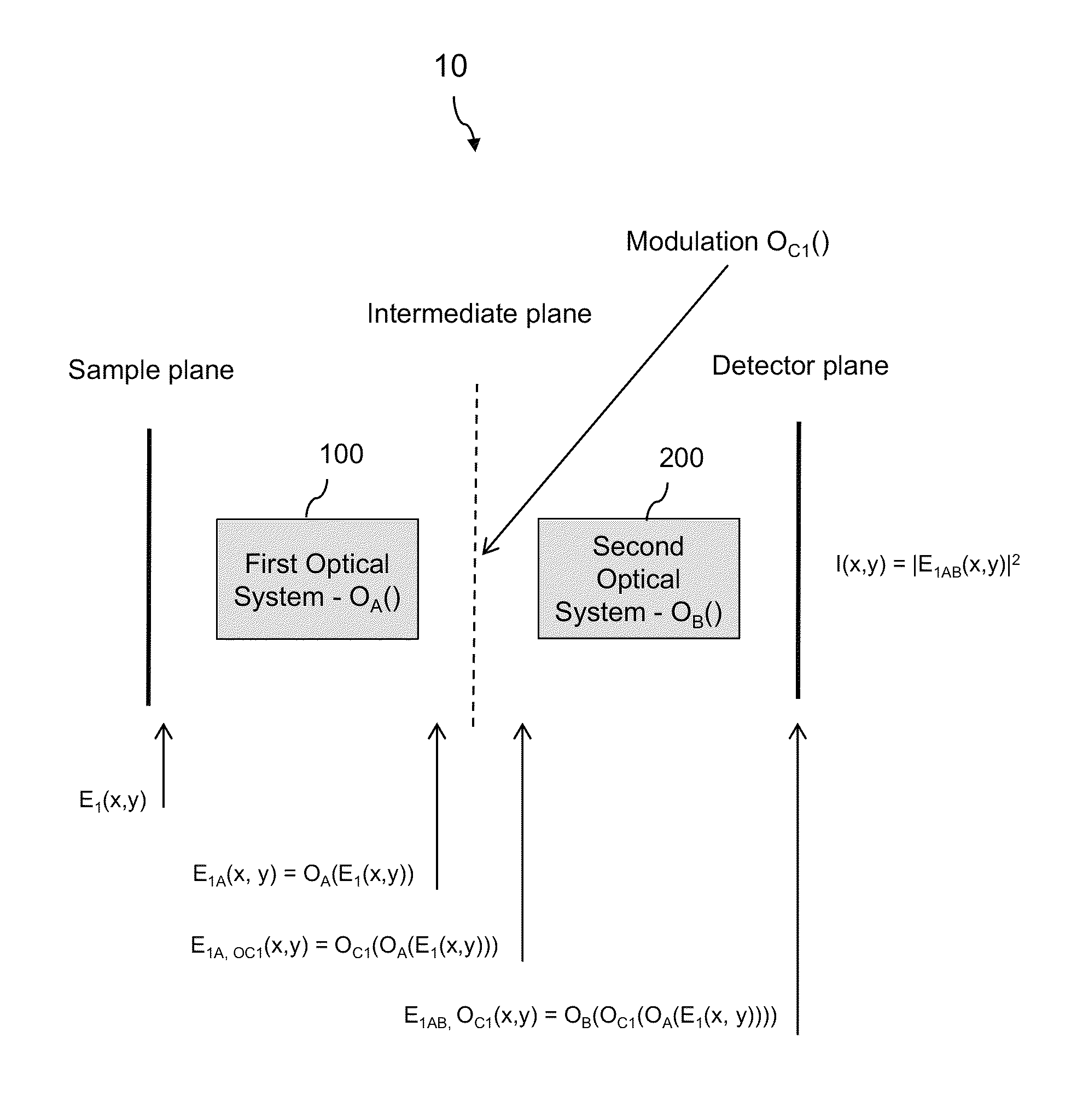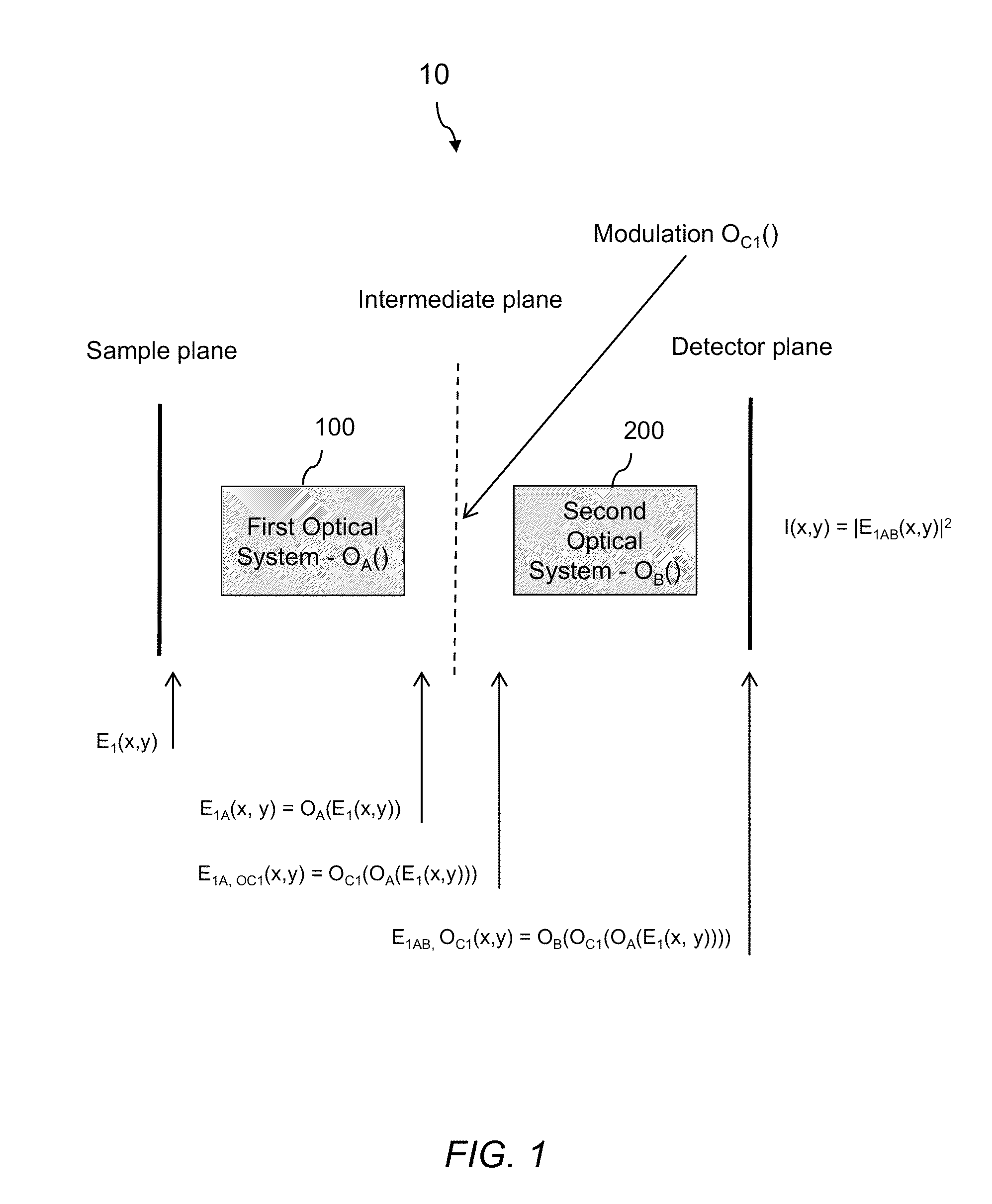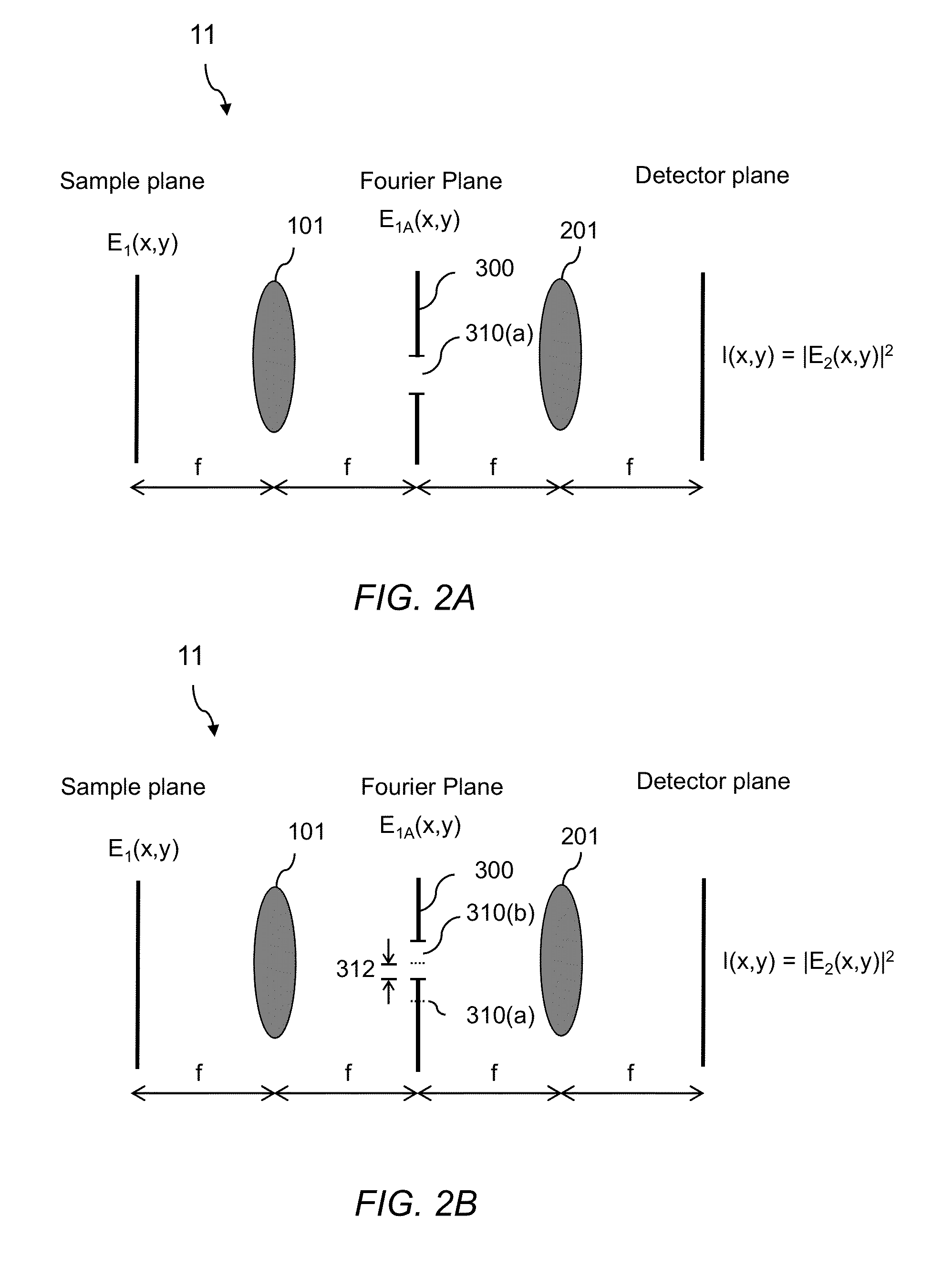Aperture scanning fourier ptychographic imaging
a four-dimensional ptychographic and aperture scanning technology, applied in the field of imaging techniques, can solve the problems of inability to resolve the total number of features of imaging lenses ranging from microscope objectives to satellite-based cameras, and the construction of images typically suffer from coherent noise,
- Summary
- Abstract
- Description
- Claims
- Application Information
AI Technical Summary
Problems solved by technology
Method used
Image
Examples
Embodiment Construction
[0025]Embodiments of the present invention will be described below with reference to the accompanying drawings. The features illustrated in the drawings may not be to scale.
[0026]I. Introduction
[0027]Fourier ptychography imaging implements a phase retrieval technique that uses angular diversity to recover complex sample images. The recovery process comprises alternating enforcement of known sample information in the spatial domain and a fixed constraint in the Fourier domain. The phase retrieval recovery may be implemented using any variant of an alternating projections algorithm, a convex reformulation of the problem, or any non-convex variant in-between. Instead of shifting a sample laterally (i.e. applying translational diversity), Fourier ptychography imaging uses a scanning spectrum constraint in the Fourier domain to expand the Fourier passband beyond that of a single captured image to recover an improved-resolution complex sample image.
[0028]Certain variable-angle illuminatio...
PUM
| Property | Measurement | Unit |
|---|---|---|
| size | aaaaa | aaaaa |
| size | aaaaa | aaaaa |
| spatial coherence length | aaaaa | aaaaa |
Abstract
Description
Claims
Application Information
 Login to View More
Login to View More - R&D
- Intellectual Property
- Life Sciences
- Materials
- Tech Scout
- Unparalleled Data Quality
- Higher Quality Content
- 60% Fewer Hallucinations
Browse by: Latest US Patents, China's latest patents, Technical Efficacy Thesaurus, Application Domain, Technology Topic, Popular Technical Reports.
© 2025 PatSnap. All rights reserved.Legal|Privacy policy|Modern Slavery Act Transparency Statement|Sitemap|About US| Contact US: help@patsnap.com



